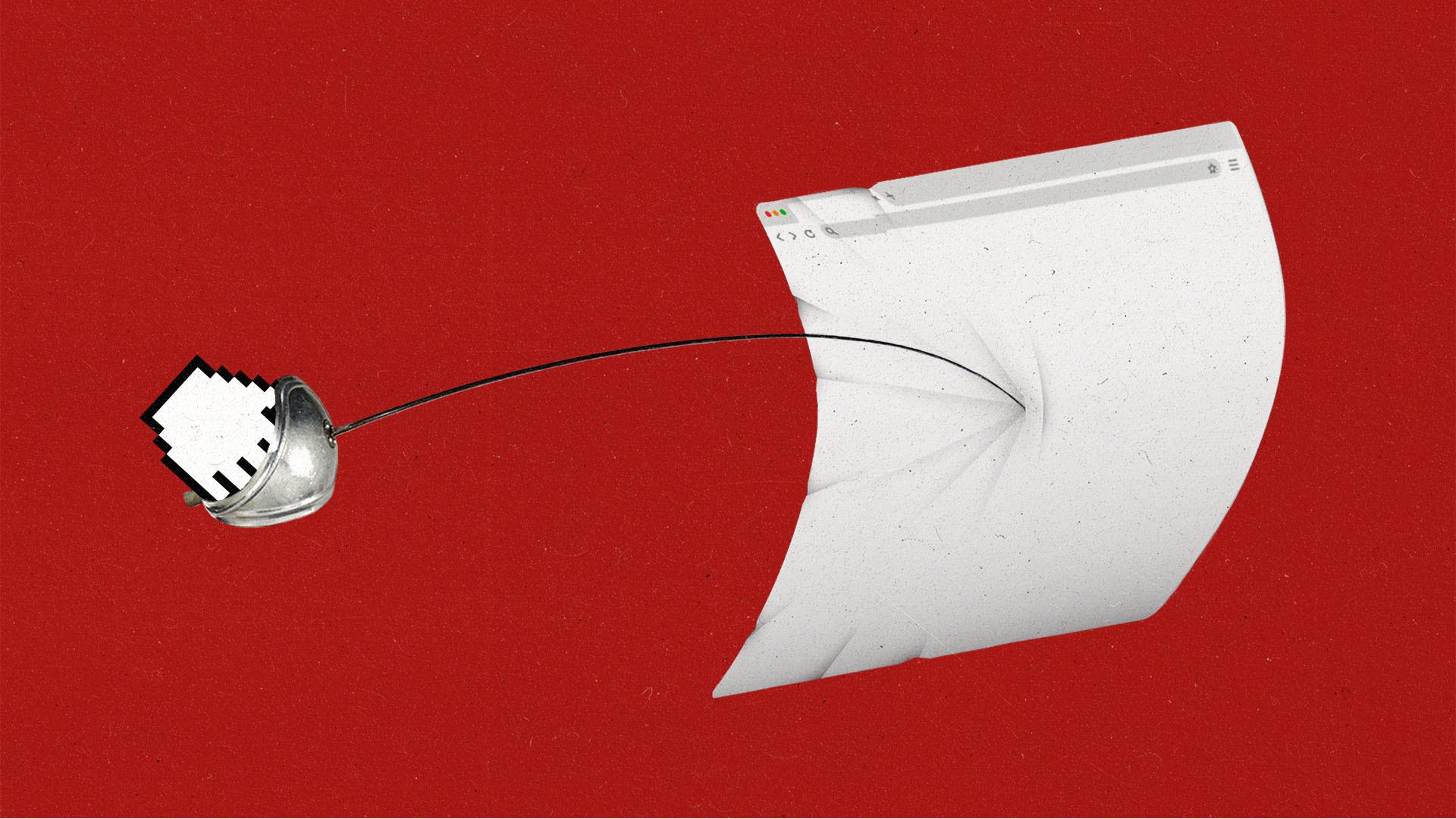When brands block the news, journalism takes a hit

Around the world, even the most casual of sports fans will be devouring news about their favorite athletes, countries’ medal counts, or when to watch certain events in the Paris 2024 Olympics. Yet, despite the high traffic that news publishers anticipate, some advertisers won’t appear alongside that content — and they might not even know why.
The reason is very simple. The word “Paris” is on many advertisers’ keyword blocklists, according to experts — meaning ads won’t appear on online content that mentions the city. Its inclusion on many of these lists stems from the brutal terrorist attacks the city experienced in November 2015. The problem is, these lists are hardly, if ever, updated to reflect current times.
“Keywords are like the Raid Roach Motel — keywords check in, but they don’t check out,” Lou Paskalis, chief strategy officer at Ad Fontes Media, tells The Current. Some advertisers, he says, have 10,000 terms they’re blocking at once on lists that haven’t been updated in years. He often asks advertisers: “When was the last time you audited your keyword blocklists?” Often, he says, the answer is “Oh, I never thought of that.”
The practice of keyword blocking, tag moderation and pre-bid filters is a contentious one. Advertisers, fearful of cancel culture, continue to prevent ads from appearing next to content that could be deemed unsafe, but are missing out on key engagement moments connected to the news cycle. Publishers, meanwhile, are missing out on a lot of business and insist that advertising on hard news does nothing to impede brand perception.
Either way, with the rise of AI and contextual technology solutions, it’s a custom that is being called out as archaic now more than ever, and one that can choke off news revenue.
Context matters
It’s instinctive for advertisers to want to block words that naturally bring up negative connotations, but at what cost?
Josef Najm, director of programmatic and partnerships at Reuters, describes the trend of keyword blocklists coming to a head around COVID — a shift which was further compounded by a fraught news cycle that included events like George Floyd’s murder, the beginning of the Black Lives Matter movement, the 2020 presidential election and ongoing global conflicts.
“The strategy here comes from the fear of the screenshot and what that might lead to,” he says, alluding to audiences capturing a brand’s ad beside anything controversial. But there’s an essential problem in that, he says. “If you’re applying words like people’s beliefs, religions, communities, whole countries, you really run into a situation where you have to recognize whether your keywords reflect what your brand is trying to promote from a communications style,” Najm tells The Current for an upcoming episode of The Current Podcast.
The missed engagement should be reason alone for advertisers to revisit their lists, says Paskalis. He recalls when Time Magazine named Taylor Swift the “Person of the Year” in 2023 and published an article about the pop star and the “war on feminism.” As it turns out, a lot of advertisers missed out on placements in the story and asked for free credits because they had the word “war” on their blocklists, according to an email he received from Mark Howard, chief operating officer of Time Inc.
“This whole industry has become knee-jerk about these things to the point where agencies are asking for makegoods on behalf of their client and you just wonder, is anyone steering the ship?” says Paskalis. “Everyone is blocking Hilary Clinton, who is a retired grandma, because of the 2016 election.”
Even often-blocked words like “slay” and “bomb” are not always used in damaging ways and could block ads from appearing on otherwise popular content. As Mike Irenski, VP of Programmatic Revenue at Hearst Newspapers, says “context matters.”
For example, articles with headlines “Grateful Dead Play This Saturday” or “Billy Joel Kills It in Last Performance” would block ads with keywords “dead” or “kills,” says Irenski. So instead of protecting ads from any type of negative association, the blocklists only avoid reaching potential target audiences, in these cases, music lovers. Lengthier words containing other keyword terms can also be blocked — such as “grape,” which contains the often-blocked keyword “rape.”
“Keywords are like the Raid Roach Motel — keywords check in, but they don’t check out.”
Lou Paskalis, chief strategy officer, Ad Fontes Media
Despite the common misconception that keyword blocking only works against URLs, anything on the page — from a user-generated content comment to a recirculation unit — can cause the entire page to get dinged, says Irenski. Sometimes entire publication names appear on keyword blocklists and hinder a programmatic deal from going through even when the advertiser comes directly to the publication wanting to do a deal.
“We had a partner onboard with us recently, target deals, and see no spend,” Irenski says. “We later learned the site they wanted to run on was on a domain blocklist for being news.”
Publisher fallback
Publishers are often in the dark about just how much keyword blocking is affecting their business, although they can always estimate.
Joshua Brandau, CEO at AI-driven software-as-a-service company Nota and former CMO at the Los Angeles Times, says that when he was at the legacy newspaper, it was always a “huge battle.” He estimates that keyword blocklists equated to up to 12% loss of revenue from a programmatic perspective. “A lot, a lot of money,” Brandau tells The Current.
“We would get on those lists, not know we were on those lists a lot of the time, and then find out we were on those lists and then have a negotiation to get off those lists,” he says.
Irenski says that 9 out of 10 times, if a programmatic deal is not spending, it is likely related to a blocklist issue. For this reason, publishers often ask advertisers to see their blocklists ahead of time or to monitor them through reporting tools.
Paskalis says keyword blocklists are one reason why advertiser demand with publishers has gone down so much, pointing to drops in digital ad revenue and emptying newsrooms.
“Advertising allows journalism to be available for everyone for free. Without that advertising — and if you can’t afford a subscription — you’re not going to have access to quality journalism,” Paskalis warns.
AI-driven future
So how do advertisers stay brand-safe but retain the audience they need? According to publishers and agencies, their fears might just be overblown. Stagwell recently published a study with publishers like The Washington Post that found that even ads placed alongside polarizing news didn’t lose their effectiveness. The 2020 IAB News Trust Halo report also found that 84% of consumers have a positive association when an ad is next to a trusted source.
The growth of artificial intelligence might also just make keyword blocklists absolute, as AI can determine if a specific person likes both hard news and say, Rolexes, and just how successful it is to place them together, says Brandau. Already there are tools like GumGum, which can analyze the context of a full page and help determine whether an article is brand-safe or not.
“Keywords in general are not going to be around forever with this technology,” says Brandau.
Subscribe to The Current
Subscribe to The Current newsletter
